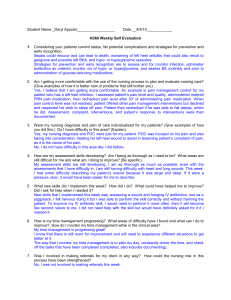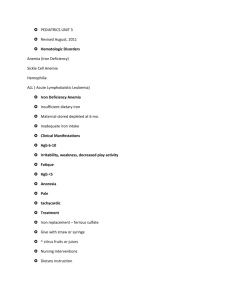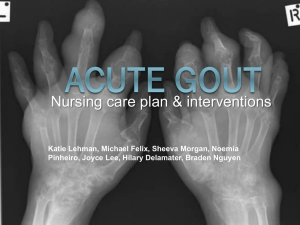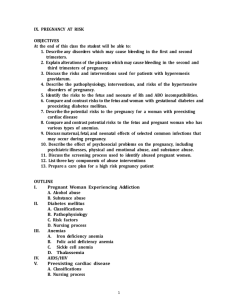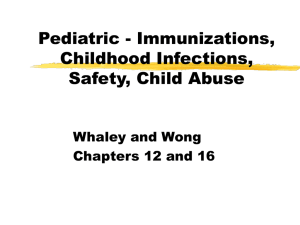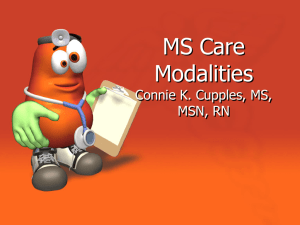Musculoskeletal Trauma – Learning Guide
advertisement
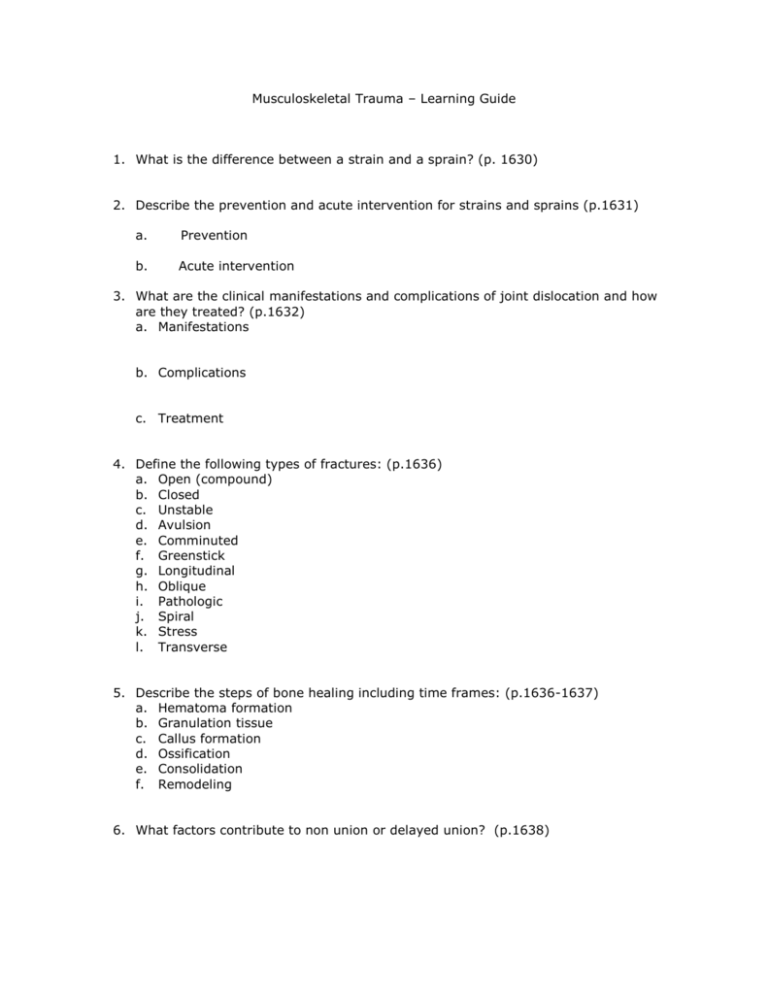
Musculoskeletal Trauma – Learning Guide 1. What is the difference between a strain and a sprain? (p. 1630) 2. Describe the prevention and acute intervention for strains and sprains (p.1631) a. Prevention b. Acute intervention 3. What are the clinical manifestations and complications of joint dislocation and how are they treated? (p.1632) a. Manifestations b. Complications c. Treatment 4. Define the following types of fractures: (p.1636) a. Open (compound) b. Closed c. Unstable d. Avulsion e. Comminuted f. Greenstick g. Longitudinal h. Oblique i. Pathologic j. Spiral k. Stress l. Transverse 5. Describe the steps of bone healing including time frames: (p.1636-1637) a. Hematoma formation b. Granulation tissue c. Callus formation d. Ossification e. Consolidation f. Remodeling 6. What factors contribute to non union or delayed union? (p.1638) 7. Describe and explain the purpose for each of the following interventions for fractures and explain appropriate nursing responsibilities: (p.1638-1641) a. Open reduction with internal fixation (ORIF) b. Skin traction c. Skeletal traction d. Casts e. Electrical stimulation 8. Explain and designate nursing responsibilities related to each of the following diagnostic procedures: (p.1625) a. Myelogram with or without contrast b. Magnetic resonance imaging (MRI) c. Bone scan d. Arthroscopy 9. What types of medications might be used for clients with fractures? (p.1641) 10. Describe an appropriate diet for a client with a fracture. What nutritional supplements are necessary? (p.1641) 11. Describe the elements of a neurovascular assessment. (p.1642) a. Vascular b. Neurological 12. Describe each of the following problems associated with musculoskeletal injuries and describe appropriate nursing interventions: (p.1649) a. muscle atrophy b. contracture c. foot drop d. muscle spasms 13. What is compartment syndrome? (p.1650) a. What can cause it? b. What are signs and symptoms? c. How is it treated? 14. Designate the signs and symptoms and treatment for the following complications of fractures: (p.1650-1651) a. Venous thrombosis b. Fat embolism 15. Complete the following related to fractured hip: (p.1653) a. Clinical manifestations b. Treatment c. Post-op nursing assessment d. Post-op positioning e. Activity level f. Complications g. Teaching 16. Designate the appropriate outcomes and interventions for the following nursing diagnoses related to amputation. (p.1658-1652) a. Risk for infection Outcome Interventions b. R/F impaired skin integrity Outcome Interventions c. Disturbed Body Image Outcome Interventions d. Impaired Physical Mobility Outcome Interventions 17. What is phantom limb sensation? (p.1660) 18. What is arthroplasty and what joints can it be used for? (p.1662-1664) 19. Describe post op care for hip arthroplasty. (p.1663) 20. Complete the following related to osteomyelitis (P>1668-1672) a. What can cause direct and indirect entry of microorganisms into the bone? direct indirect b. Describe the pathological process. c. What are the clinical manifestations? Include both systemic and local. Systemic Local d. Describe chronic osteomyelitis e. What is the treatment for osteomyelitis? f. What are complications of osteomyelitis?


